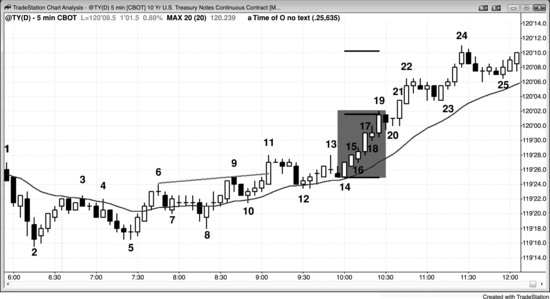Chapter 1
Example of How to Trade a Breakout
Many beginners find breakouts difficult to trade because the market moves fast, requiring quick decisions, and often has large bars, which means that there is more risk and traders then have to reduce their position size. However, if a trader learns to identify one that is likely to be successful, the trader's equation can be very strong.
Figure 1.1 Breakouts Are Reliable Setups

When a chart discussion runs for multiple pages, remember that you can go to the Wiley website (www.wiley.com/go/tradingranges) and either view the chart or print it out, allowing you to read the description in the book without having to repeatedly flip pages back to see the chart.
Successful breakouts, like the bull breakouts in Figure 1.1, have excellent math, but can be emotionally very difficult to trade. They happen quickly and traders instinctively know that the risk is to the bottom of the spike (they put their protective stop at one tick below the low of the lowest bar in the bull spike, like below bar 14), which is often more than their usual risk tolerance. They want a pullback but know it will likely not come until the market is higher, and they are afraid to buy at the market because they are buying at the top of a spike. If the market reverses on the next tick, they will have bought at the top of a spike and their protective stop is very far away. ...

